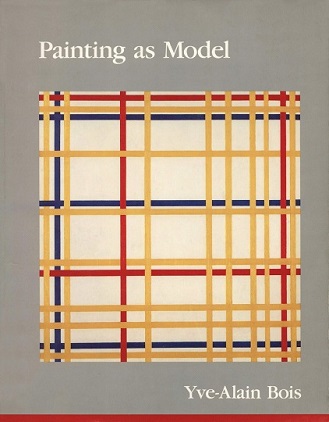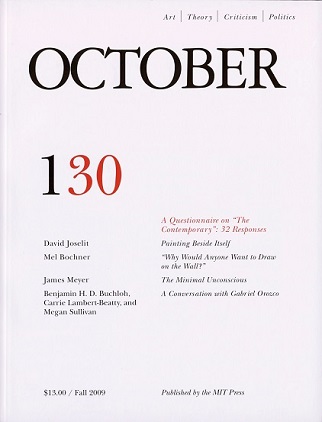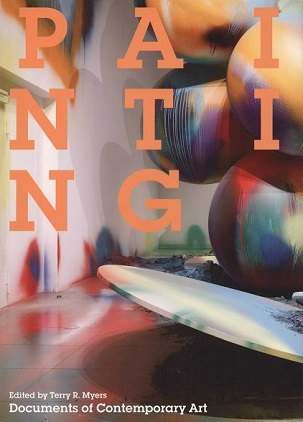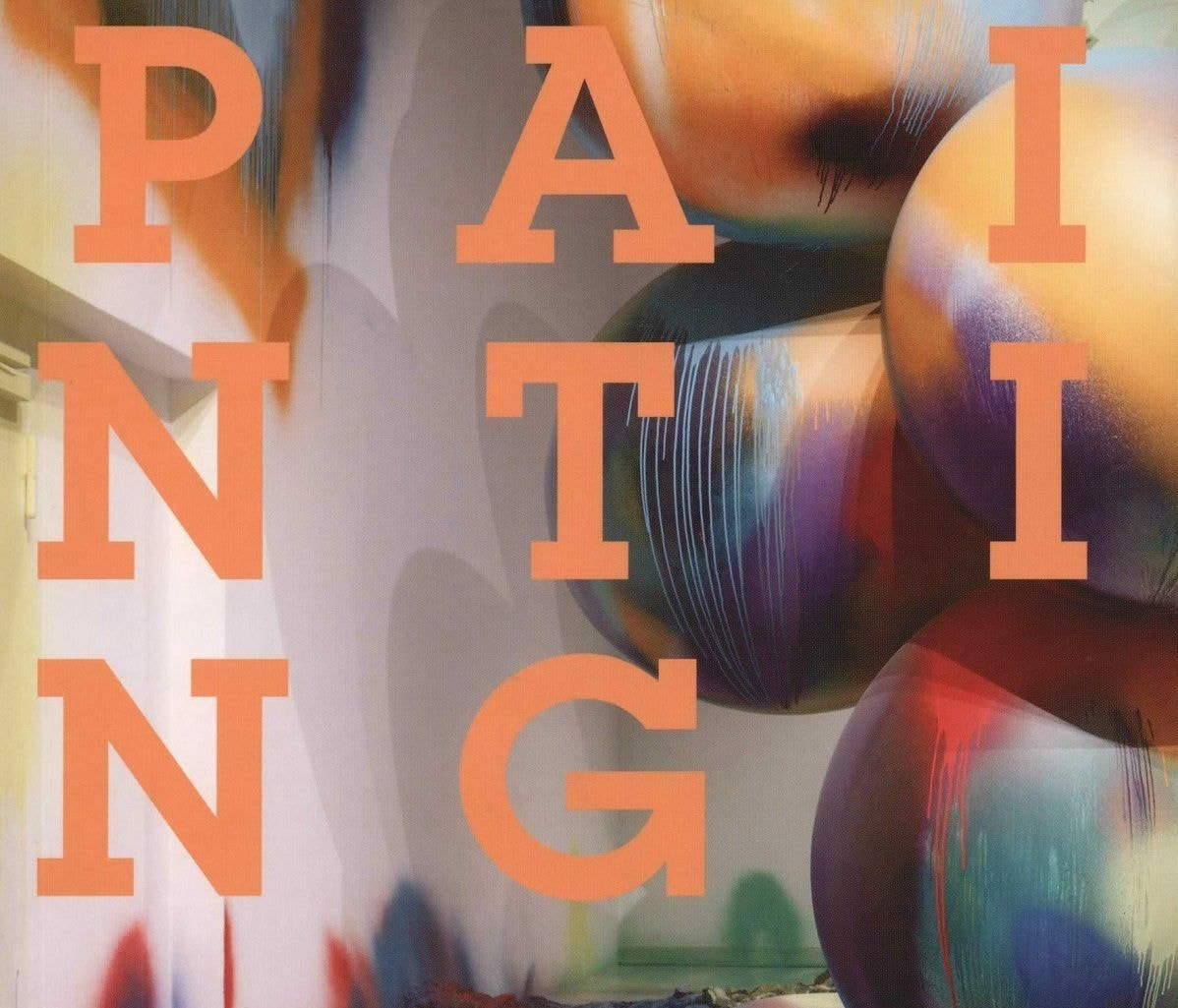From June 1 to August 9 Garage Museum of Contemporary Art hosts the exhibition yes no why later by German painter Katharina Grosse. Grosse’s work is painting turned installation – whole environments that the artist transforms with spray-paint. Painting has been the object of heated theoretical debate for the last 50 years. Conceptual art and postmodern philosophy have been anticipating its death, while artists and theorists have tried to reanimate it. Garage Research has prepared an overview of works from its library that shed some light on the development of the medium over the last half century.
Overview of publications on contemporary painting
Overview by Yelena Ishenko, Valerij Ledenev, and Anastasia Tishunina.

Milena Orlova, Alexandra Obukhova, Zhivopis’ bez granits. Ot pop-arta k kontseptualizmu (Art without Limits. From Pop Art to Conceptualism)
Moscow: Galart, 2001, 176 pp.
This work by Alexandra Obukhova and Milena Orlova will give the reader an idea of the main movements and developments in painting of the second half of the 20th century. The album, including many illustrations, discusses a broad range of historical and theoretical subjects, drawing chronological and conceptual connections between Pop art and New Realism, abstract art and photorealism on the one hand, and institutional critique (Daniel Buren and BMPT), feminism (Judy Chicago), and late-1970s realism (Leon Golub and Gerhard Richter) on the other. Choosing to avoid any conceptual narrative, Obukhova and Orlova present the philosophy of particular artists and movements, drawing on facts and witness testimony. In defining and delimitating painting, the authors are guided by Wittgenstein’s concept of family resemblance. “Painting,” they claim, echoing a quote from Art&Language in the introduction, “is what resembles painting … It is what is dedicated to painting.” Those interested in the Russian art scene will want to read the chapter dedicated to Soviet nonconformist art. V. L.

Brandon Taylor, Art Today. Aktual’noye iskusstvo 1970–2005 (Art Today. Contemporary Art 1970–2005)
Moscow: SLOVO, 2006, 256 pp.
If the previous publication offers a general overview of artistic schools and movements in the postwar period, Brandon Taylor’s book examines theoretical debates around the medium of painting starting from the 1960s, and focuses on the issues surrounding the “revival” of figurative painting and realism. Setting the tone here are, again, the works of Art&Language, who define contemporary painting as a reflexive practice constantly questioning its own limitations, mode of production, and social value. To Taylor, the nature of this practice is to a great extent defined by the postmodern situation, with its endless quotes and its mixing of various languages and imagery. At the same time, he draws on phenomena like the Glasgow School, as represented by Ken Currie and his militant socially oriented realism; Gérard Fromanger with his political experiments in photography-based painting; and feminist and postcolonial practices of artists like Valerie Jaudon and Joyce Kozloff. V. L.

Yve-Alain Bois, Painting as Model
Cambridge: MIT Press, 1993, 327 pp.
This treatise by the influential art critic specializing in 20th century abstraction looks at the roots of the current state of affairs in painting. Rejecting contemporary theories, Yve-Alain Bois assumes what might seem to be an old-fashioned revisionist approach, which is closer to the formalist analysis of Clement Greenberg than to the writings of Bois’ colleagues from October. On a closer look, however, Bois’ theory turns out to be more contemporary, while his formalism is limited to social and political issues. According to Bois, changes in the mode of production, the Industrial Revolution, and political issues have affected painting to a greater extent than the invention of photography and cinema. Speaking of Mondrian’s art, Bois connects his ideas to the signing of the Molotov-Ribbentrop Pact, bringing in a quote from the artist’s diaries: “The culture of plastic art shows that real freedom requires mutual equivalence.” Very much aware of the naivety of such statements, Bois opposes them to the 1970s and 80s Western European “return to order,” a trend that manifested itself in the growing popularity of figurativism and a deconstructivist turn in art theory. Discussing the works of his favourite modernist artists (Matisse, Picasso, Mondrian, Newman, and others), Bois highlights the gap between structuralist and deconstructivist theories on the one hand, and unique artworks on the other. To him, in the age of mass reproduction of art, the art market, and digital technology, it is forms that define the work of art (especially, a modernist one) and its aesthetic, political and social implications. E. I.

David Joselit, “Painting Beside Itself”
October №130, pp. 125–34
A serious discussion of 20th century painting can hardly avoid mention of David Joselit, art critic and columnist for October journal. A strong believer in non-objective art, Joselit defines a contemporary painting as something that is more than a material object. The decisive moment, for him, is the transformation of a painting into a kind of network, which can include installations, performances, video, lectures and any other material or nonmaterial forms of art production. According to Joselit, such “transitive painting” is a kind of action directed outwards, rather then an object – and thus it has the potential to avoid commodification. “[W]hen it enters into networks, the body of painting is submitted to infinite dislocations, fragmentations, and degradations,” ceasing to exist as a material object. While Joselit draws on the work of artists like Jutta Koether and Wade Guyton, his ideas could easily be applied to Russian artists such as Viktoria Begalskaya, Ivan Novikov, and Elena Kovylina. E. I.

Terry R. Myers (ed.), Painting
London: Whitechapel Gallery, 2011, 240 pp.
This collection of essays from the last three decades, compiled by art historian and critic Terry Myers, highlights the contradictions and perturbations that have rocked the world of contemporary art. Some of the texts are published unabridged, while others are presented as excerpts. Arranged chronologically, they make up a narrative of death-and-revival, starting with some 1980s discussions on “the end of painting” and moving on to texts suggesting a broader understanding of the medium. The book opens with Douglas Crimp’s 1981 “The End of Painting,” denouncing both the grandeur of Abstract Expressionism and New Realism (the text is a chapter from Crimp’s On the Museum’s Ruins, published in a Russian translation by V-A-C in 2015, and also available at Garage Library). Following this are interviews and manifestos of artists working on the revival of painting as a contemporary medium (Marlene Dumas, Katharina Grosse, Luc Tuymans and others) and critical essays denying the possibility of such a revival in a traditional or modernist sense. Daniel Birnbaum sees contemporary painting as working with color in cityscapes; curator Ulrike Groos criticizes the popular idea of a painter as a person with a palette and a brush, while art historian David Joselit defines a contemporary painting as one that forms a part of a larger network. Without proclaiming the victorious return of painting to contemporary art, Myers’ compilation outlines the transformation of the medium and discusses its potential in the contemporary art world. E. I.

David Batchelor (ed.), Colour
London: Whitechapel Gallery, 2006, 240 pp.
Another compilation from the Documents of Contemporary Art series, this is a collection of essays examining color from cultural, cognitive, and philosophical perspectives. The book opens with a selection of texts by artists who were the first to approach the study of color as a discipline (Kazimir Malevich, Josef Albers, Piet Mondrian), and continues with a range of philosophical treatises by Walter Benjamin, Roland Barthes, Julia Kristeva, and others. It also features essays by contemporary artists such as Mark Rothko, Bridget Riley, and Brice Marden. Apart from painting, the publication discusses the role of color in cinema (offering excerpts from film scripts by Quentin Tarantino and Sergei Eisenstein), and music (discussing a song by Johnny Cash). The cultural and literary perspectives are represented by Milan Kundera and Umberto Eco. Finally, academic works are complemented by fiction, diary excerpts, and childhood memories, featuring color as a key to understanding the world surrounding us. A. T.
